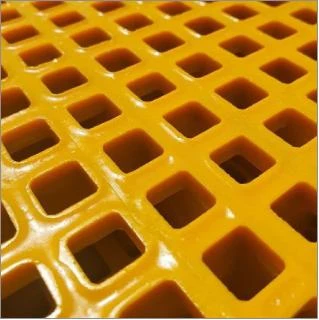loading...
- No. 9, Xingyuan South Street, Dongwaihuan Road, Zaoqiang County, Hengshui, Hebei, China
- admin@zjcomposites.com
- +86 15097380338
- Welcome to visit our website!
frp angle bar
Understanding FRP Angle Bars Innovations in Structural Materials
Fiber Reinforced Polymer (FRP) angle bars have emerged as a revolutionary solution in the field of construction and structural engineering. These materials, characterized by their high strength-to-weight ratio, corrosion resistance, and design flexibility, are increasingly being utilized in various applications, ranging from bridges to building frames. This article delves into the properties, benefits, applications, and future prospects of FRP angle bars.
What Are FRP Angle Bars?
FRP angle bars are structural elements made from a composite material consisting of a polymer matrix reinforced with fibers, typically glass, carbon, or aramid. The unique properties of these fibers, combined with the versatility of polymers, result in a material that is not only lightweight but also incredibly strong and durable. The bars are shaped in an angle format, which provides excellent structural support and is particularly useful in applications requiring robust frame construction.
Key Properties of FRP Angle Bars
1. Corrosion Resistance One of the most significant advantages of FRP angle bars is their resistance to corrosion. Unlike traditional steel, FRP does not rust or degrade when exposed to moisture, chemicals, or saline environments. This property makes them an ideal choice for use in coastal areas, chemical plants, and other harsh environments.
2. Lightweight FRP materials are significantly lighter than steel or concrete, which can reduce transportation costs and ease installation processes. The lightweight nature also allows for the efficient designing of structures, as less support is required, thereby saving on material costs.
3. High Strength Despite their lightweight, FRP angle bars possess impressive tensile strength. This characteristic enables them to support heavy loads while maintaining structural integrity, making them suitable for various engineering applications.
4. Design Flexibility The manufacturing process of FRP allows for customization in terms of shape, size, and color. This flexibility means that engineers can design components that meet specific requirements without being constrained by the limitations of conventional materials.
Applications of FRP Angle Bars
frp angle bar

The versatility of FRP angle bars has led to their adoption in several sectors. Key applications include
- Infrastructure Bridges and elevated structures benefit immensely from FRP angle bars due to their corrosion resistance and high strength. They reduce the need for maintenance, prolonging the lifespan of the structure.
- Industrial Settings In chemical plants, wastewater facilities, and offshore structures, the resistance to corrosive substances makes FRP angle bars a preferred choice.
- Marine Applications The marine environment is notoriously harsh on materials. FRP angle bars excel in this setting, providing durability and structural support without the risk of deterioration from saltwater.
- Prefabricated Structures The light weight and ease of transport allow for the efficient assembly of prefabricated buildings and modular structures, where quick installation is paramount.
Future Prospects
As technology advances, the manufacturing processes and properties of FRP angle bars are expected to improve further. Ongoing research into new types of fibers and polymers may enhance their mechanical properties and reduce costs, making them more accessible.
Additionally, with increasing awareness of sustainability, the demand for environmentally friendly materials is on the rise. FRP can be manufactured using recycled materials and can contribute to lighter, more energy-efficient constructions, aligning with global sustainability goals.
Conclusion
FRP angle bars represent a significant advancement in structural materials, offering numerous advantages over traditional options. Their unique properties make them suitable for a wide range of applications, particularly in environments where corrosion resistance is crucial. As the industry continues to evolve, the adoption of FRP angle bars is likely to increase, paving the way for innovative structures that meet the demands of modern engineering and sustainability standards. The future of construction is bright, and FRP angle bars are at the forefront of this exciting evolution in materials science.
-
Transform Your Spaces with FRP Grating SolutionsNewsNov.04,2024
-
The Versatility and Strength of FRP RodsNewsNov.04,2024
-
The Excellence of Fiberglass Water TanksNewsNov.04,2024
-
The Benefits of FRP Grating for Your ProjectsNewsNov.04,2024
-
Elevate Your Efficiency with FRP Pressure VesselsNewsNov.04,2024
-
Welcome to the World of FRP Pressure VesselsNewsOct.12,2024
-
Unveiling the Future of Filtration: Why FRP Filter Vessels are a Game ChangerNewsOct.12,2024
